ALREADY A PAID SUBSCRIBER? SIGN IN
Grasses were always going to be an important part of the garden. They make the link to the meadows and fray the boundary, so it is hard to tell where garden begins and ends. On our windy hillside, they also help in capturing this element, each one describing it in a slightly different way. The Pennisetum macrourum have been our weather-vanes since they claimed the centre of the garden in August. Moving like seaweed in a rock pool on a gentle day, they have tossed and turned when the wind has been up. The panicum, in contrast, have moved as one so that the whole garden appears to sway or shudder with the weather.
Though the pennisetum took centre stage and needed the space to rise head and shoulders above their companions, they are complemented by a matrix of grasses that run throughout the planting and help pull it together from midsummer onwards. Choosing which grasses would be right for the feeling here was an important exercise and the grass trial in the stock beds helped reveal their differences. At one end of the spectrum, and most ornamental in their feeling, were the miscanthus.
Clumping strongly and registering as definitely as a shrub in terms of volume, I knew I wanted a few for their sultry first flowers and then the silvering, late-season plumage. It soon became clear that they would need to be used judiciously, for their exotic presence was at odds with the link I wanted to make to the landscape here. At the other the end of the spectrum were the deschampsia and the melica, native grasses which we have here in the damp, open glades in the woodland. We have used selections of both and they have helped ground things, to tie down the garden plants which emerge amongst them.
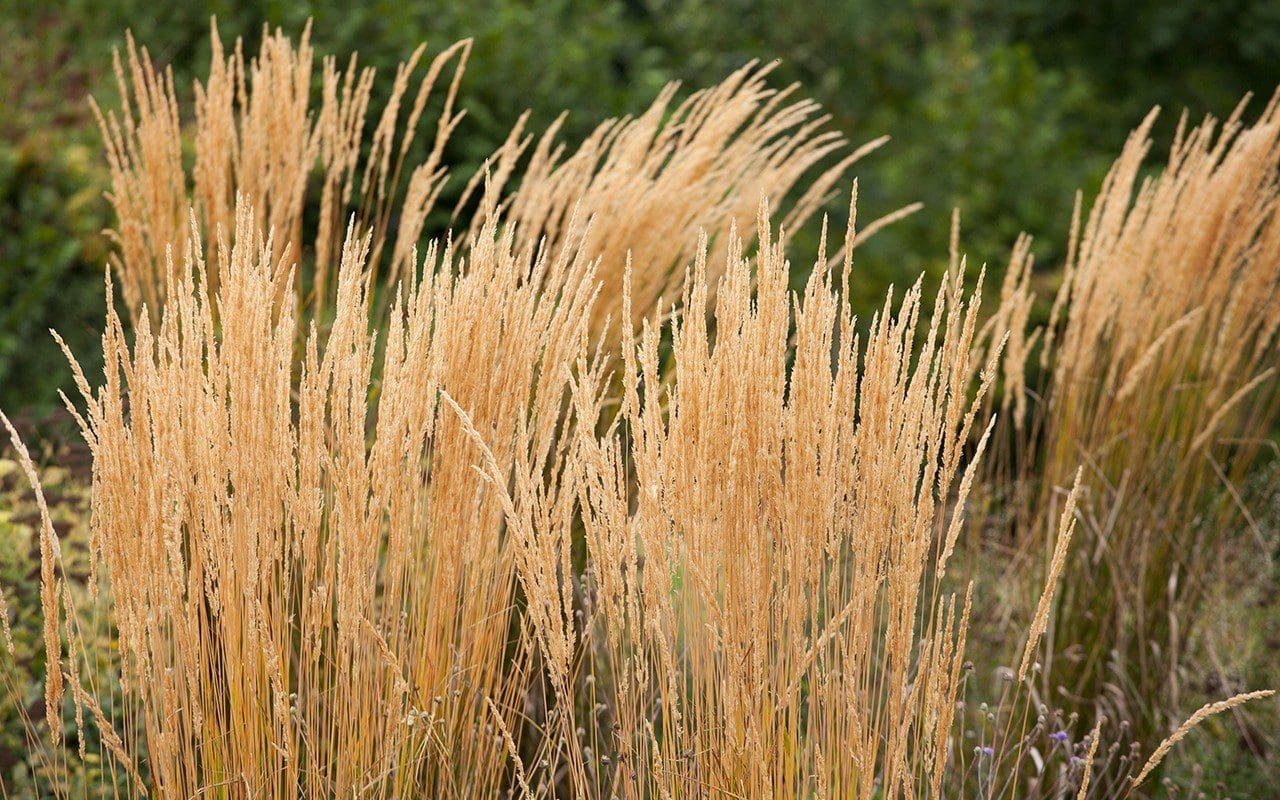 Calamagrostis x acutiflora ‘Karl Foerster’
Calamagrostis x acutiflora ‘Karl Foerster’
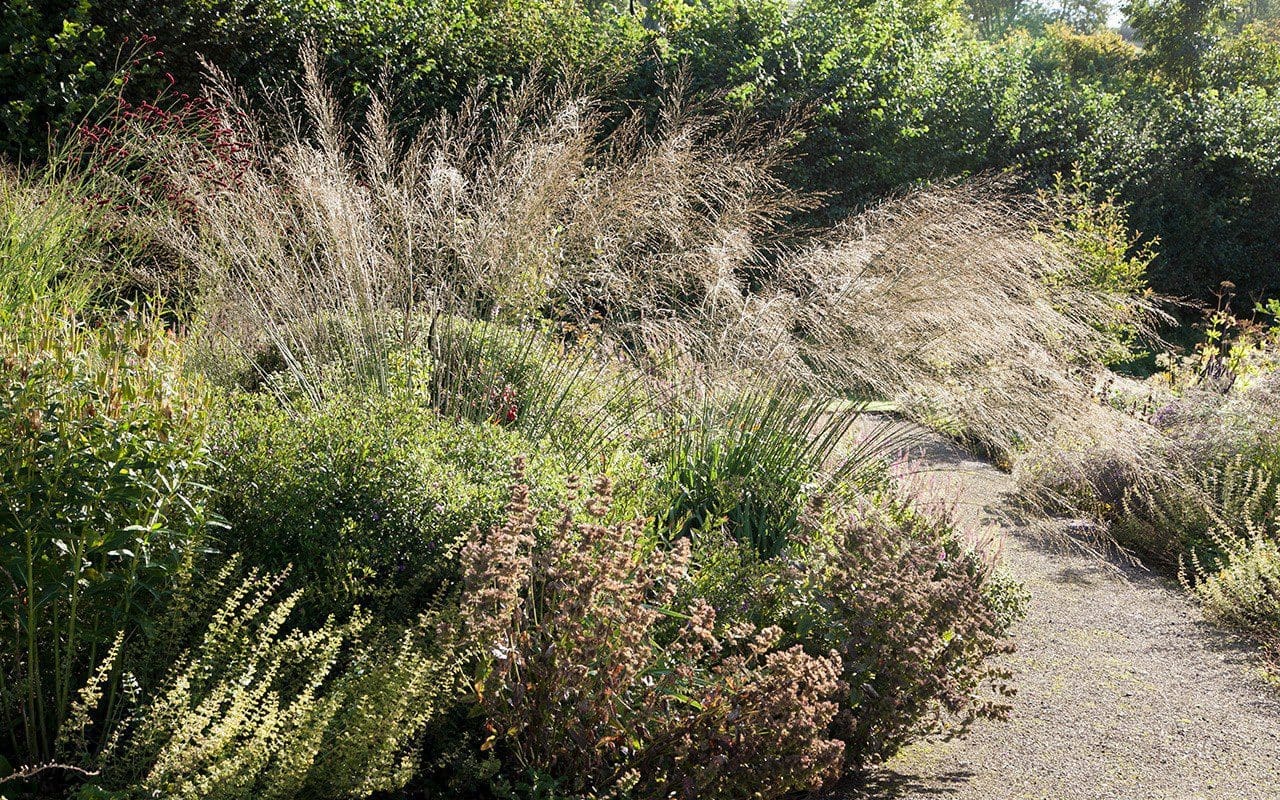 Molinia arundinacea ssp. caerulea ‘Transparent’
Molinia arundinacea ssp. caerulea ‘Transparent’
Falling between to two ends of the shifting scale, we experimented with a range of genus to find the grasses that would provide the gauziness I wanted between the flowering perennials. As it is easy to have too many materials competing when choosing your building blocks for hard landscaping, so it is all too easy to have too many grasses together. Though subtle, each have their own function and I knew I couldn’t allow more than three to register together in any one place. Tall, arching Molinia caerulea ssp. arundinacea ‘Transparent’ that is tall enough to walk through and yet not be overwhelmed by would be the key plant at the intersection of paths. The fierce uprights of Calamagrostis x acutiflora ‘Karl Foerster’, scoring thunderous verticals early in the season and then bleaching to longstanding parchment yellow, would need to be given its own place too in the milking barn yard. I needed something subtler and less defined as their complement in the main garden.
Our free-draining ground and sunny, open position has proved to be perfect for cultivars of Panicum virgatum or the Switch Grass of American grass prairies. We tried several and soon found that, as late season grasses, they need room around their crowns early in the season if they are not to be overwhelmed. Late to come to life, often just showing green when the deschampsia are already flushed and shimmering with new growth, it is easy to overlook their importance from midsummer onwards. I knew from growing them before that they like to be kept lean and are prone to being less self-supporting if grown too ‘soft’ or without enough light, but here they have proven to be perfect. Bolting from reliably clump-forming rosettes, each plant will stay in its place and can be relied upon to ascend into its own space before filling out with a clouding inflorescence.
 Panicum virgatum ‘Cloud Nine’. The original stock plant is in the centre.
Panicum virgatum ‘Cloud Nine’. The original stock plant is in the centre.
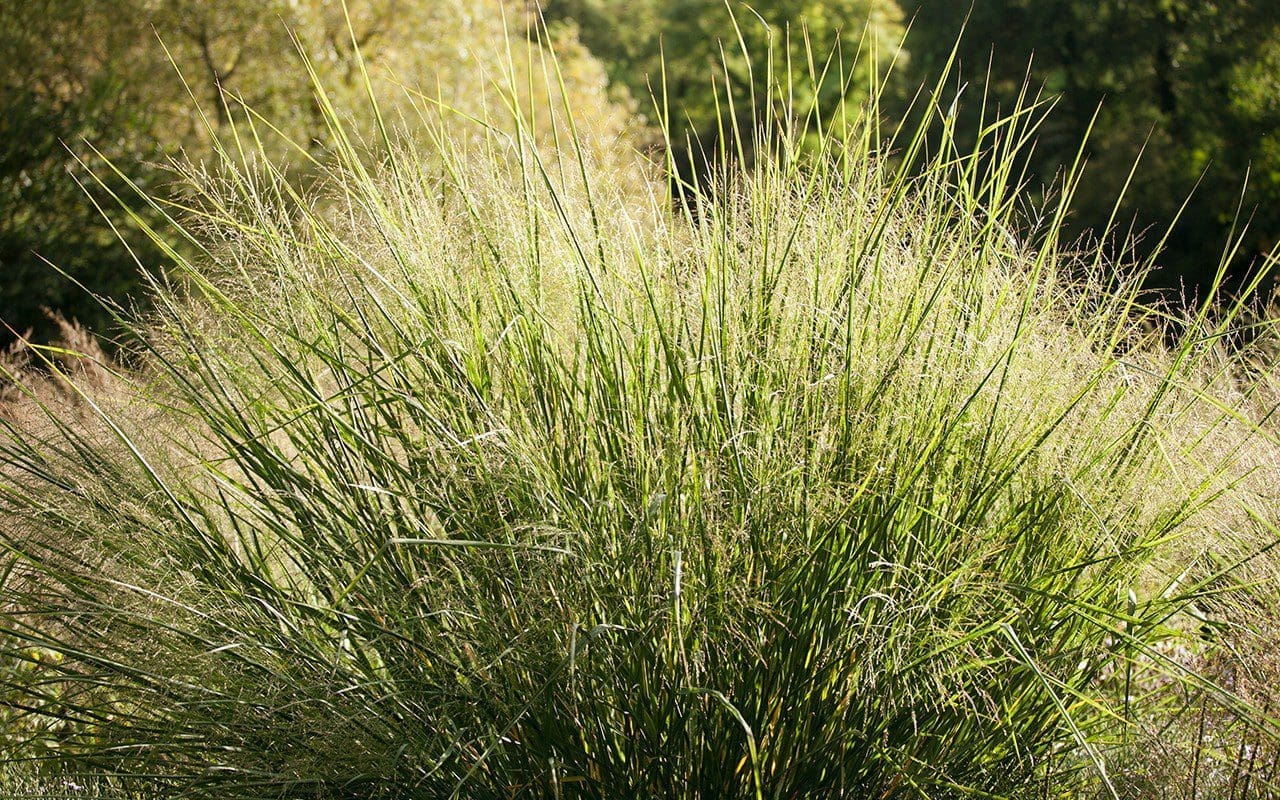 Panicum virgatum ‘Cloud Nine’
Panicum virgatum ‘Cloud Nine’
I tried several and, with the luxury of having the space to do so, some proved better than others. The largest and most dramatic is surely ‘Cloud Nine’. My eldest plant, the original, remains in the position of the old stock bed and the garden and younger companions were planted to ground it. This was, in part, due to it already being in the right place, for I needed a strong presence here where I’d decided not to have shrubs and they have helped with their height to frame the grass path that runs between them and the hedge along the lane. By the time the stock beds were dismantled we were pleased not to have to move it, because the clump is now hefty, and a two man job to lift and move it.
I first saw this selection in Piet Oudolf’s stock beds several years ago, where it stood head and shoulders above his lofty frame. Scaled up in all its parts from most other selections, the silvery-grey leaf blades are wider than most panicum and very definite in their presence. Standing at chest height in August before showing any sign of flower, it is the strongest of the tribe. Now, in early autumn, its pale panicles of flower have filled it out further, broadening the earlier bolt of foliage. If it was a firework in a firework display of panicum, it would surely be the last, the scene-stealer that has you gasping audibly. I like it too for the way it pales as it dies and it stands reliably through winter to arrest low light and make a skeletal garden flare that is paler in dry weather and cinnamon when wet.
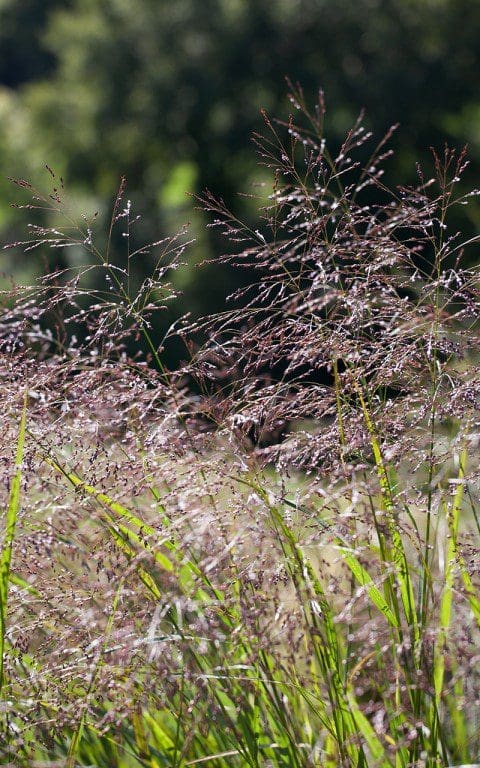 Panicum virgatum ‘Rehbraun’
Panicum virgatum ‘Rehbraun’
I have three other panicum in the garden, which are entirely different in their scale and presence. Though it has proven to be larger than anticipated in our hearty ground and will need moving about in the spring to get the planting just right, I am pleased to have selected ‘Rehbraun’. Calm, green foliage rises to about a metre before starting to colour burgundy in late summer. The base of redness is then eclipsed by a mist of mahogany flower, which when planted in groups, moves as one in the breeze. I have it as a dark backdrop to creamy Ageratina altissima ‘Braunlaub’ (main image) and Sanguisorba ‘Cangshan Cranberry’, which are wonderful as pinpricks of brightness held in its suspension. It is easily 1.2 metres tall here and, weighed down by rain, it can splay, and I have found that several are too close to the path, but I like it and will find them a place deeper within the borders.
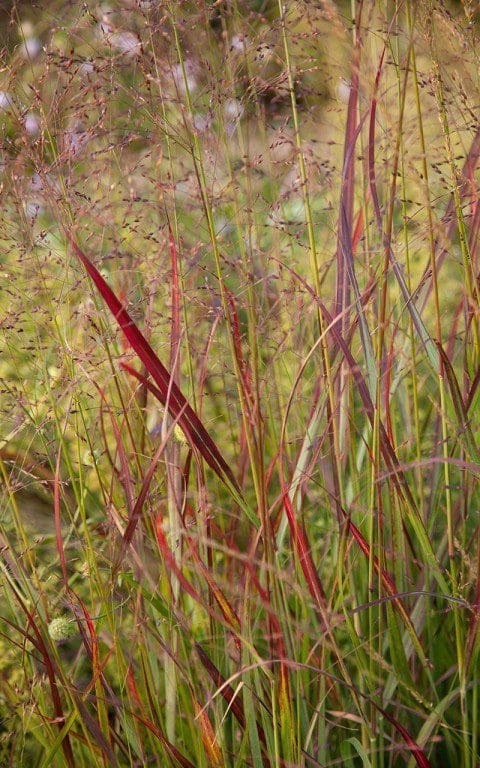 Panicum virgatum ‘Heiliger Hain’
Panicum virgatum ‘Heiliger Hain’
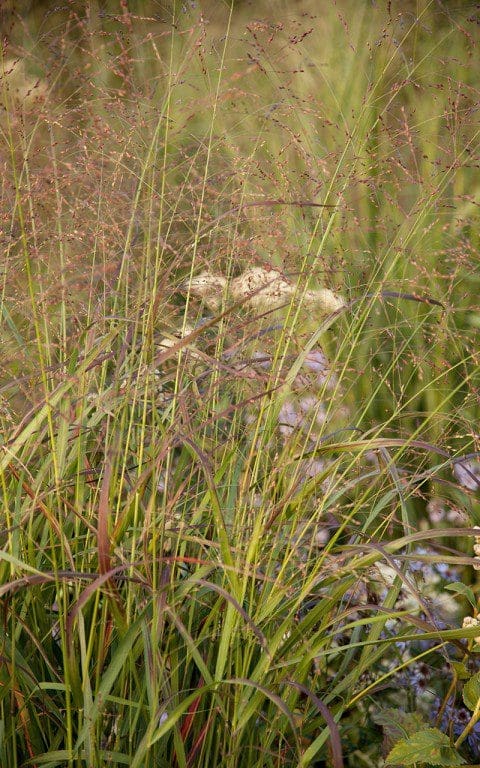 Panicum virgatum ‘Shenandoah’
Panicum virgatum ‘Shenandoah’
Though it has not done as well for me here – it may well be that it is a selection from a drier part of the States – ‘Heiliger Hain’ has been beautiful. Silvery and fine, the leaf tips colour red early in summer and are strongly blood red by this point in the season. It is small, no more than 80cm tall when in flower, and so I have given it room to rise above Calamintha sylvatica ‘Menthe’ and the delicate Succissella inflexa. Similar in character, though better and stronger, is ‘Shenandoah’ which I have drawn through most of the upper part of the garden. Blue-grey in appearance as it rises up in the first half of summer, it begins to colour in late August, bronze-red becoming copper-orange as it moves into autumn. Neil Lucas of Knoll Gardens says it has the best autumn colour of all panicum. It also stands well in winter to cover for neighbours that have less stamina. Where in the right place, with plenty of light and no competition at the base whilst it is awakening, it is proving to be brilliant and will be the segue from the summer garden, slowly making its presence felt above an undercurrent of asters to finally eclipse everything in a last November burn.
Words: Dan Pearson / Photographs: Huw Morgan
Published 29 September 2018
This winter’s notable run of frosts has already marked this year as distinct from the mild run we’ve had of late. We have woken again and again to a glistening world where footfall comes with a crunch and the fields and hedges are unified by the white freeze. The frost has come with clear blue skies and, as the sun has crept over the folds in the land, the colours of winter have bled back in with the thaw of its extending fingers. These are the days when I am pleased for the skeletons of the last growing season. This early into the winter most are still standing and those that will continue to do so are already showing their stamina. The bronze fennel is one of the best. It is already naturalising here, seeding around the rusty barns and even where last year’s bonfire saw them burn in the spring clear up. I have them at the front of the house with the twisted remains of the apricot evening primrose and they have been alive with birds. A flitting wren and robins rummaging around amongst their stems where the seed has fallen and great tits stripping the seed from the architecture of umbels.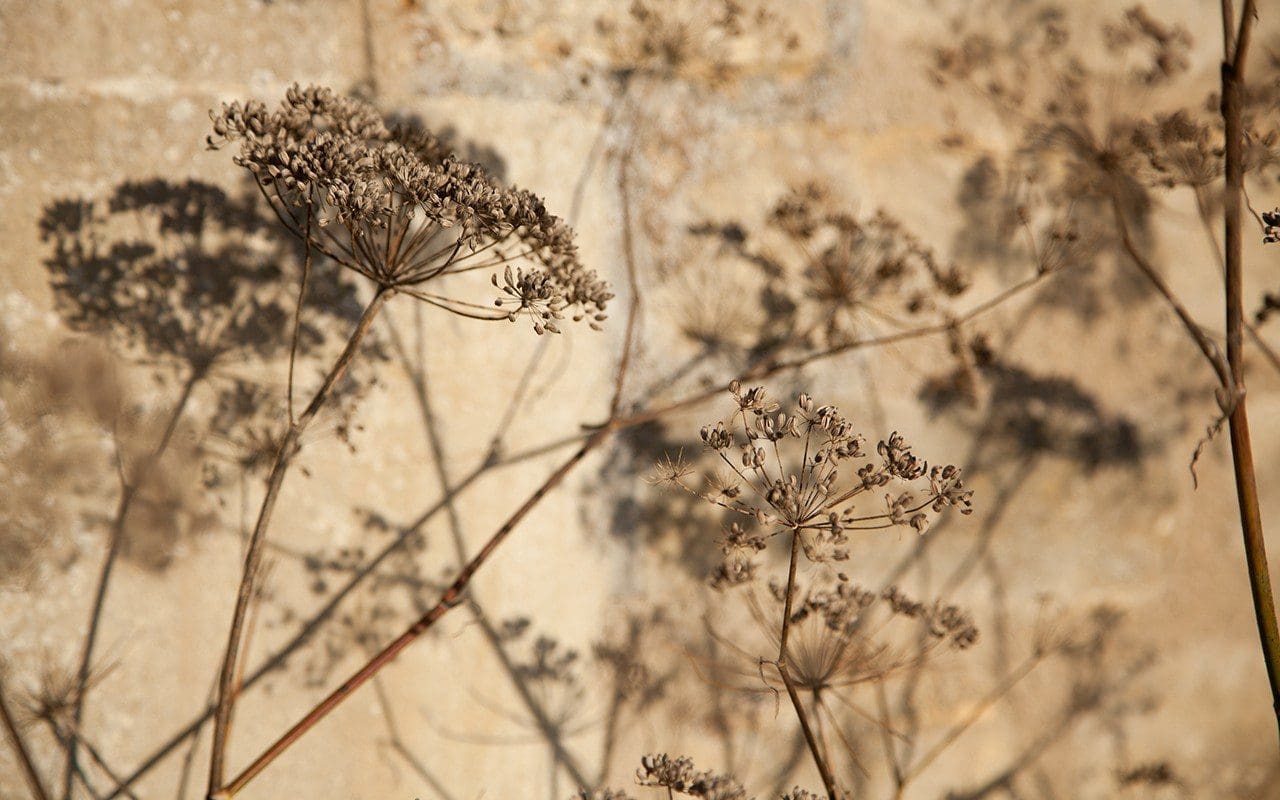 Bronze fennel
In the new garden, where I am working around the old stock beds for now, I am grateful for the reminder that I must plan for these bare bones in its winter incarnation. I want it to be a place that is as fascinating and beautiful in its death throes – and whilst resting – as it is in summer. The volunteer sunflowers left from the garden’s previous chapter, and whose seeds are stripped by the birds, are also a prompt that the garden should be as much a feeding ground as a place to study the decay and drawing back of winter. Where the ground now lies fallow, waiting and empty we will have life and light and change as the skeletons age and bleach and topple towards spring.
Bronze fennel
In the new garden, where I am working around the old stock beds for now, I am grateful for the reminder that I must plan for these bare bones in its winter incarnation. I want it to be a place that is as fascinating and beautiful in its death throes – and whilst resting – as it is in summer. The volunteer sunflowers left from the garden’s previous chapter, and whose seeds are stripped by the birds, are also a prompt that the garden should be as much a feeding ground as a place to study the decay and drawing back of winter. Where the ground now lies fallow, waiting and empty we will have life and light and change as the skeletons age and bleach and topple towards spring.
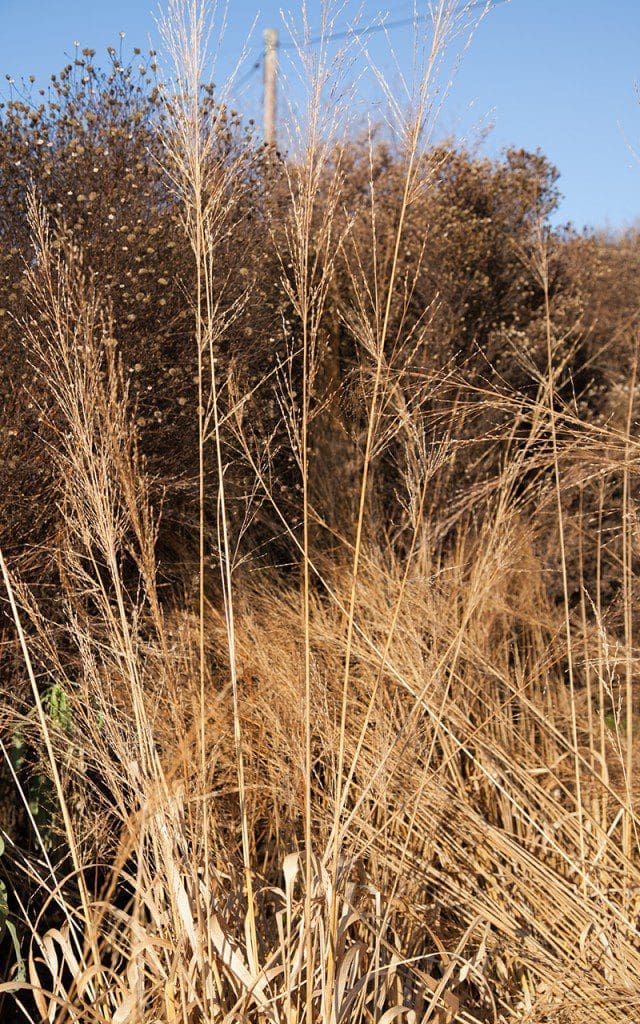 Molinia caerulea ssp. arundinacea ‘Transparent’
The Molinia caerulea ssp. arundinacea ‘Transparent’ that were standing until so very recently have already given way to the weather and lie strewn. I will remember their habit and plant them away from the path so that, when they do fall, their sheaves can be enjoyed akimbo. Their lack of endurance as skeletons can be forgiven if they are in association with plants that keep it together and stand for longer. A drift of the buff powder-puffs of Aster pyrenaeus ‘Lutetia’ or A. x herveyi with its seed now blown free to reveal their light-reflecting starry calyces. Another grass perhaps, such as the Panicums, to arrest the sun in their plumage. The aptly named P. ‘Cloud Nine’ is showing itself to be one of the best I have here, standing tall, the elegant foliage now the colour of straw and parchment, the seedheads large and open. Pale on a dry day, yellowed when it is damp.
Molinia caerulea ssp. arundinacea ‘Transparent’
The Molinia caerulea ssp. arundinacea ‘Transparent’ that were standing until so very recently have already given way to the weather and lie strewn. I will remember their habit and plant them away from the path so that, when they do fall, their sheaves can be enjoyed akimbo. Their lack of endurance as skeletons can be forgiven if they are in association with plants that keep it together and stand for longer. A drift of the buff powder-puffs of Aster pyrenaeus ‘Lutetia’ or A. x herveyi with its seed now blown free to reveal their light-reflecting starry calyces. Another grass perhaps, such as the Panicums, to arrest the sun in their plumage. The aptly named P. ‘Cloud Nine’ is showing itself to be one of the best I have here, standing tall, the elegant foliage now the colour of straw and parchment, the seedheads large and open. Pale on a dry day, yellowed when it is damp.
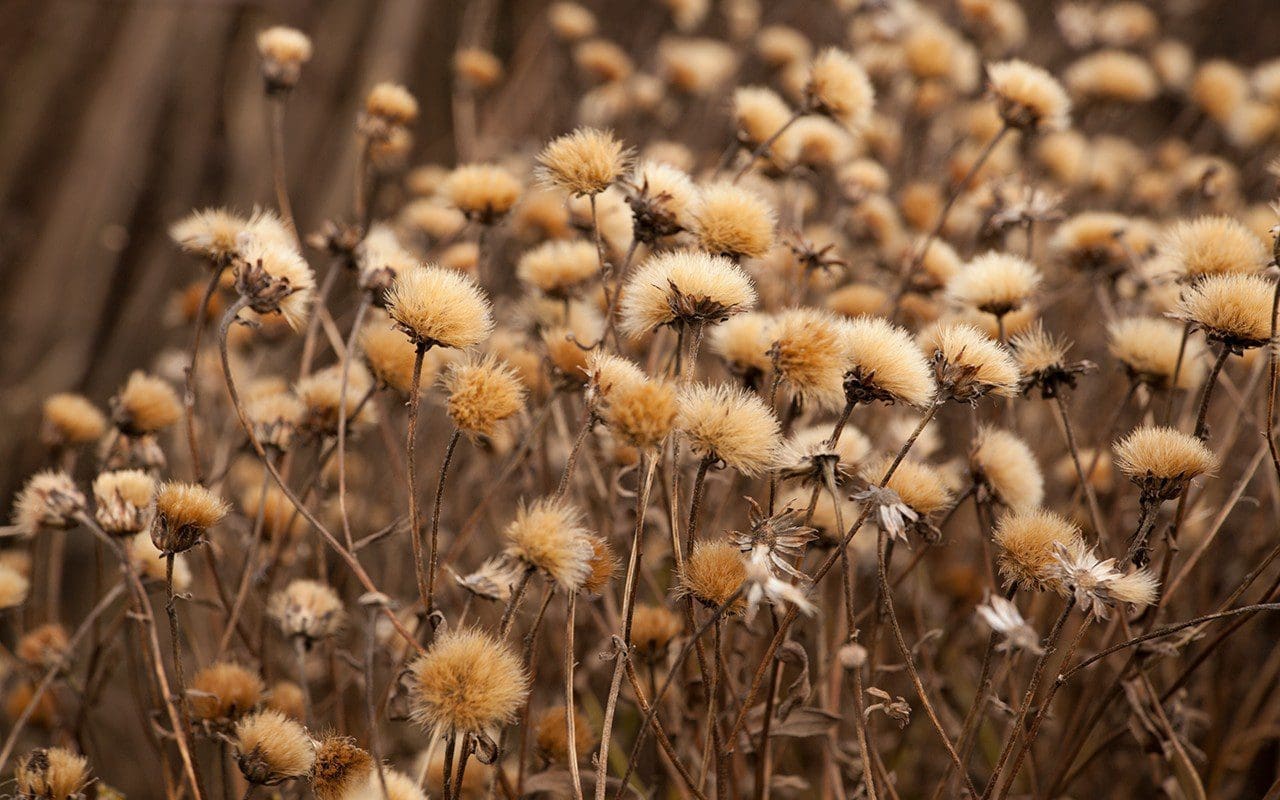 Aster pyrenaeus ‘Lutetia’
Aster pyrenaeus ‘Lutetia’
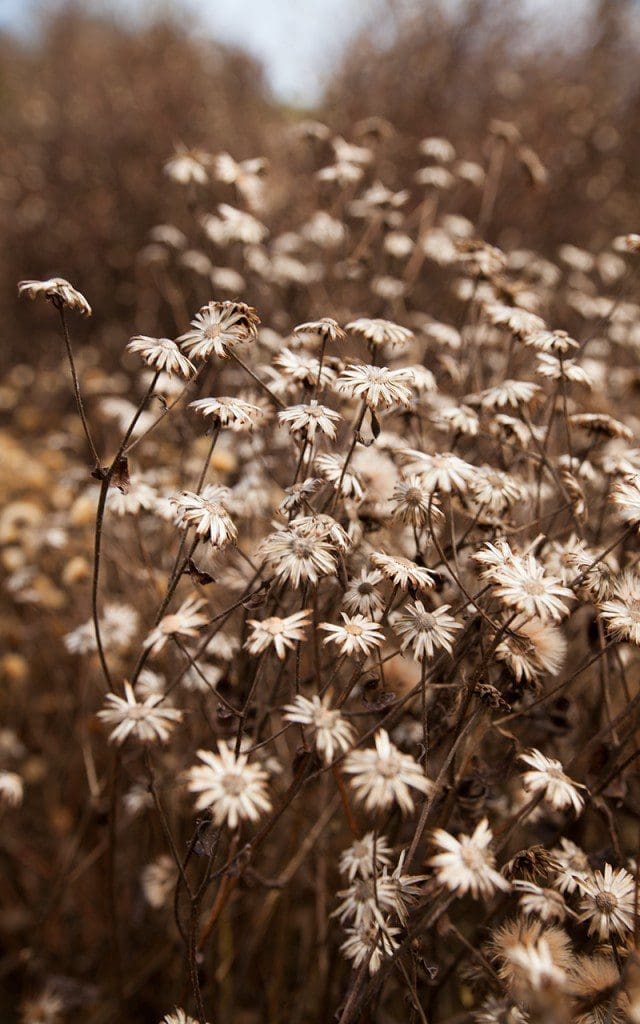 Aster x herveyi
Aster x herveyi
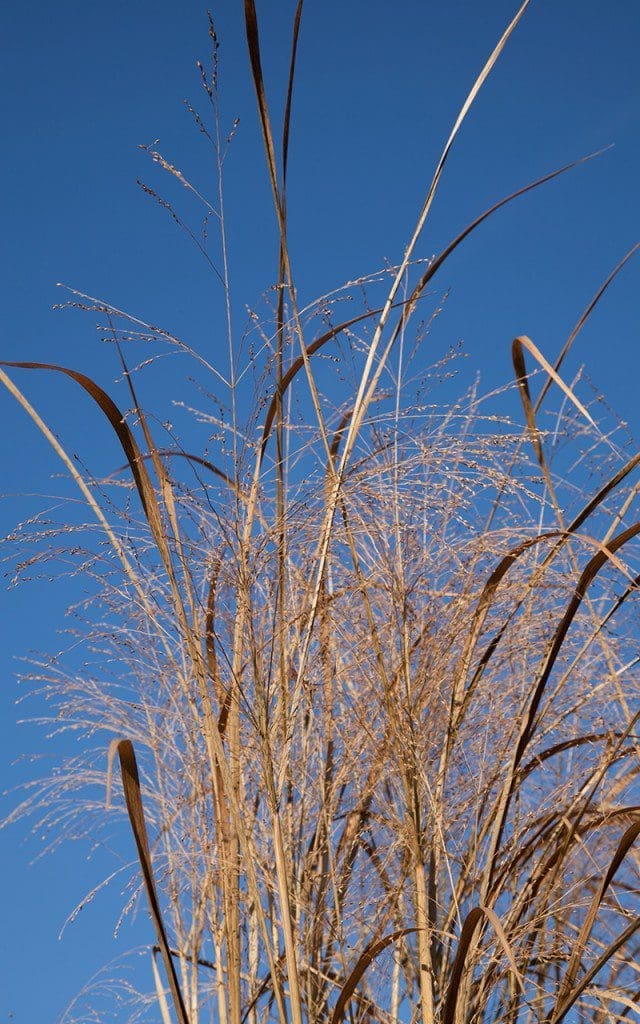 Panicum ‘Cloud Nine’
Remarkable now, and noteworthy for being at its very best in the winter, is Glycyrrhiza yunnanensis. The Yunnan liquorice is perfectly hardy here and has taken well to our sunny slopes. I first saw it on an autumn visit to Piet Oudolf’s garden with my friend and gardener from the Millennium Forest, Midori. In typical fashion Piet offered us the seed and we both took a handful of the extraordinary pods. The following spring we sowed the seed, Midori in Hokkaido and me back here back in Somerset. The plants in Japan have struggled to attain stature, despite coming through a winter beneath an eiderdown of snow, but mine have soared to well over head height and have spawned further generations which I am now nurturing in the frame for the spring planting of the new garden.
Panicum ‘Cloud Nine’
Remarkable now, and noteworthy for being at its very best in the winter, is Glycyrrhiza yunnanensis. The Yunnan liquorice is perfectly hardy here and has taken well to our sunny slopes. I first saw it on an autumn visit to Piet Oudolf’s garden with my friend and gardener from the Millennium Forest, Midori. In typical fashion Piet offered us the seed and we both took a handful of the extraordinary pods. The following spring we sowed the seed, Midori in Hokkaido and me back here back in Somerset. The plants in Japan have struggled to attain stature, despite coming through a winter beneath an eiderdown of snow, but mine have soared to well over head height and have spawned further generations which I am now nurturing in the frame for the spring planting of the new garden.
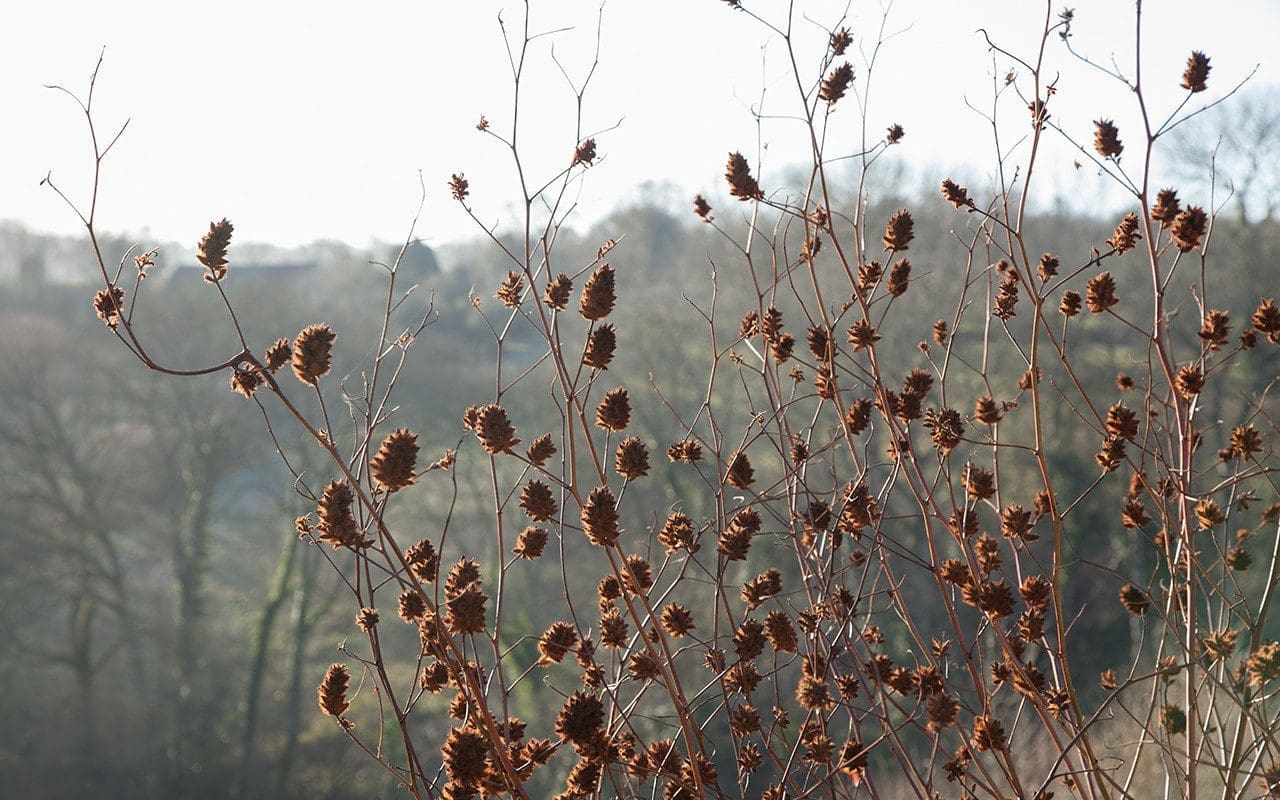 Glycyrrhiza yunnanensis
Their skeletons have been almost immune to the winter. Last year we had to fell them in the spring and cut their glory short to make way for the new growth. The cinnamon-coloured stems, which in summer are clothed with fine, pinnate foliage, stand at over two metres. The seedpods, which are the end result of a pretty but rather insignificant clutch of lilac, pea-like flowers, are as good as any seedpod gets. The size of a hens egg, and like a spiny fir cone in appearance, they are covered in rust-brown hairs that are bristly to the touch and hold the hoar frost as though it was designed for their armature. I will march them through the new garden where they can shine in the cold months and provide us with a place that will celebrate this apparent down time.
Glycyrrhiza yunnanensis
Their skeletons have been almost immune to the winter. Last year we had to fell them in the spring and cut their glory short to make way for the new growth. The cinnamon-coloured stems, which in summer are clothed with fine, pinnate foliage, stand at over two metres. The seedpods, which are the end result of a pretty but rather insignificant clutch of lilac, pea-like flowers, are as good as any seedpod gets. The size of a hens egg, and like a spiny fir cone in appearance, they are covered in rust-brown hairs that are bristly to the touch and hold the hoar frost as though it was designed for their armature. I will march them through the new garden where they can shine in the cold months and provide us with a place that will celebrate this apparent down time.
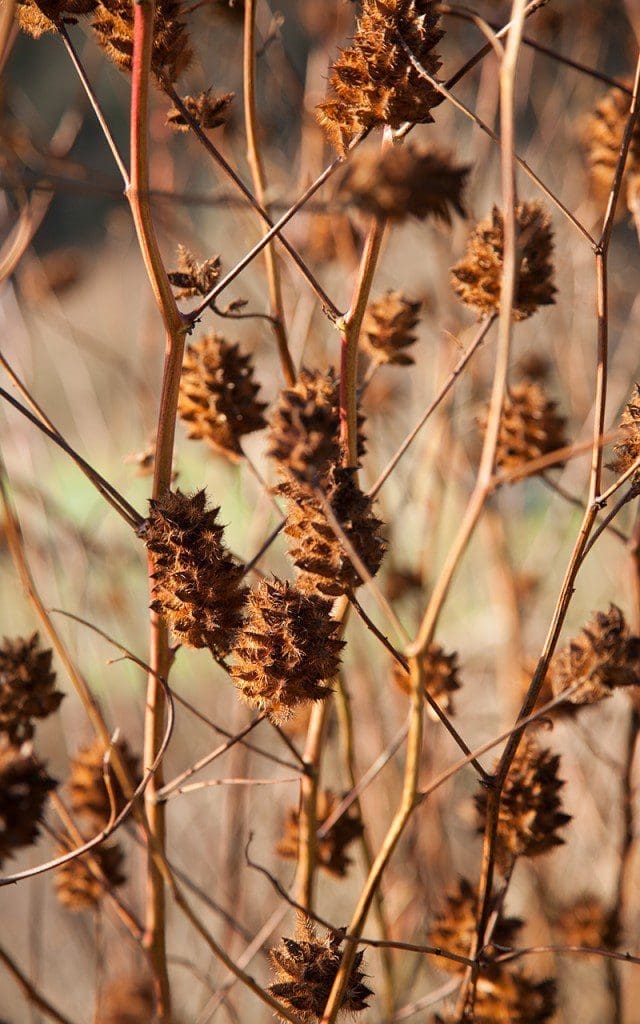 Glycyrrhiza yunnanensis seedheads
Words: Dan Pearson / Photographs: Huw Morgan We are sorry but the page you are looking
for does not exist.
You could return to the homepage
Glycyrrhiza yunnanensis seedheads
Words: Dan Pearson / Photographs: Huw Morgan We are sorry but the page you are looking
for does not exist.
You could return to the homepage